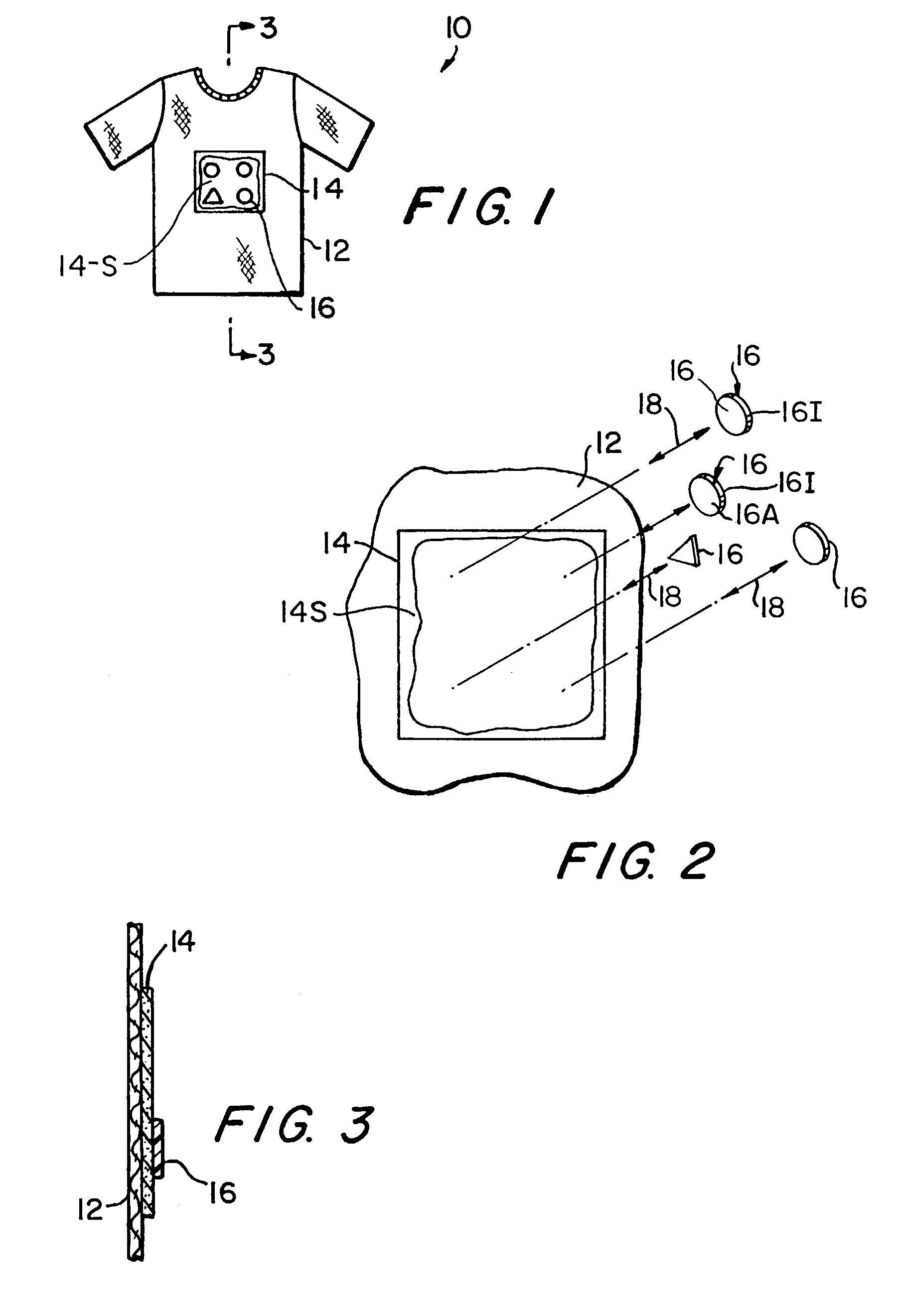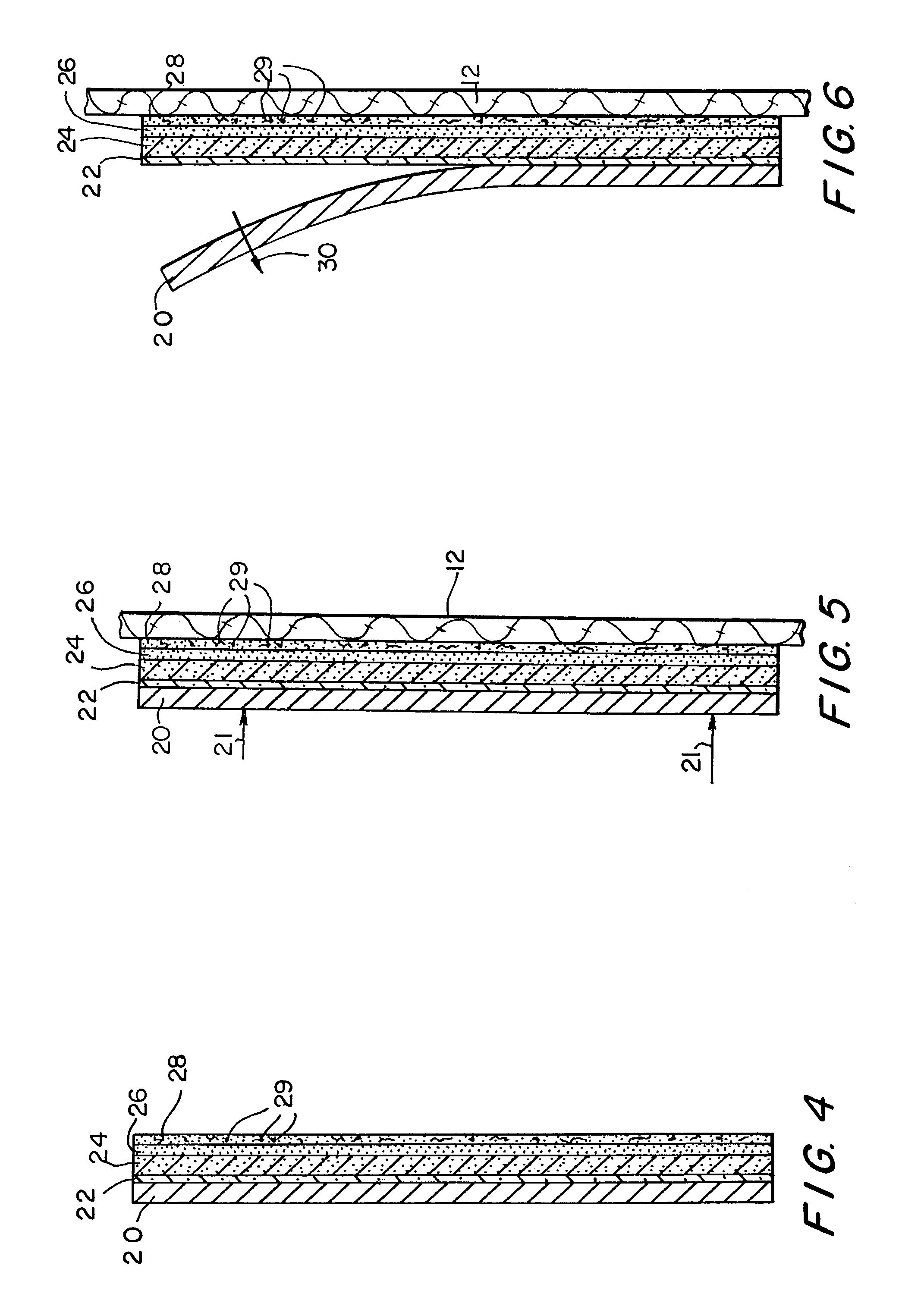Interactive-design garment where the wearer can create and alter the graphic decoration on the garment and method of manufacturing same
a technology of graphic decoration and garment, applied in the field of interactive design garment, can solve the problems of laborious and relatively expensive, pvc substrate is often relatively thick, and uncomfortable, and achieves the effect of good artwork and substantial thinness
- Summary
- Abstract
- Description
- Claims
- Application Information
AI Technical Summary
Benefits of technology
Problems solved by technology
Method used
Image
Examples
Embodiment Construction
[0038]FIGS. 1, 2 and 3 show a product 10 of the present invention in the form of a T-shirt 12 including a PVC substrate 14 with an outer surface 14S on which appears a principal graphic image, a plurality of removable decals 16, each having an inner surface 16A and an outer surface 16I with its own secondary image thereon. This is a typical prior art T-shirt knit of 100% cotton fiber; however, this invention is well suited to other garments made of any fiber onto which a PVC substrate is adherable when applied with known heat and pressure techniques.
[0039]The invention of FIGS. 1–3 may function as a kit or assembly which includes the garment 12, the PVC substrate 14 and the removable PVC decals 16. In FIG. 2 each of the decals 16 is shown with a two-headed arrow 18 which signifies that each decal can be repeatedly applied to and attached, removed and re-attached to the outer surface 14S of the PVC substrate 14 pursuant to the wishes and creative inclinations of the garment's user.
[0...
PUM
| Property | Measurement | Unit |
|---|---|---|
| thickness | aaaaa | aaaaa |
| thickness | aaaaa | aaaaa |
| thickness | aaaaa | aaaaa |
Abstract
Description
Claims
Application Information
 Login to View More
Login to View More - R&D
- Intellectual Property
- Life Sciences
- Materials
- Tech Scout
- Unparalleled Data Quality
- Higher Quality Content
- 60% Fewer Hallucinations
Browse by: Latest US Patents, China's latest patents, Technical Efficacy Thesaurus, Application Domain, Technology Topic, Popular Technical Reports.
© 2025 PatSnap. All rights reserved.Legal|Privacy policy|Modern Slavery Act Transparency Statement|Sitemap|About US| Contact US: help@patsnap.com



